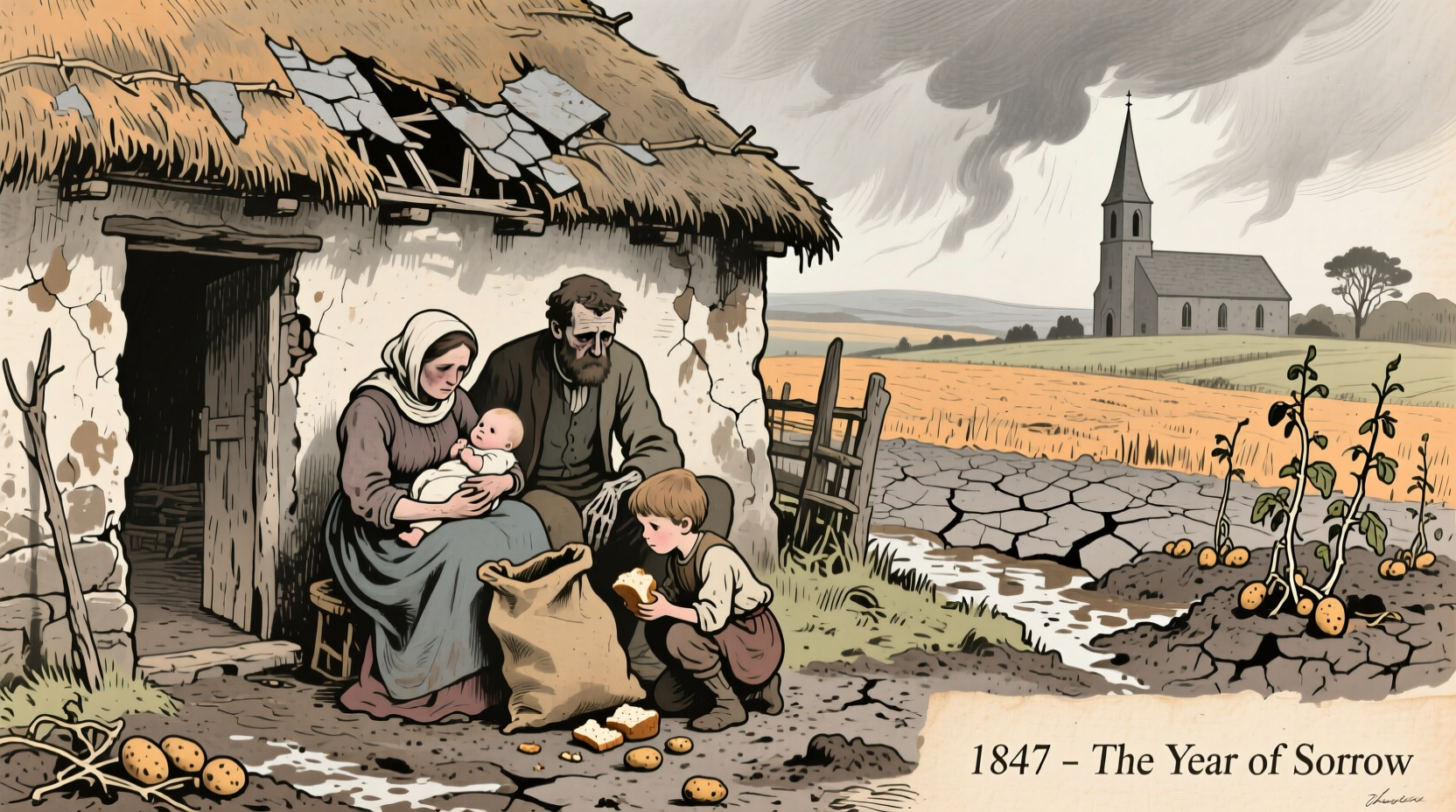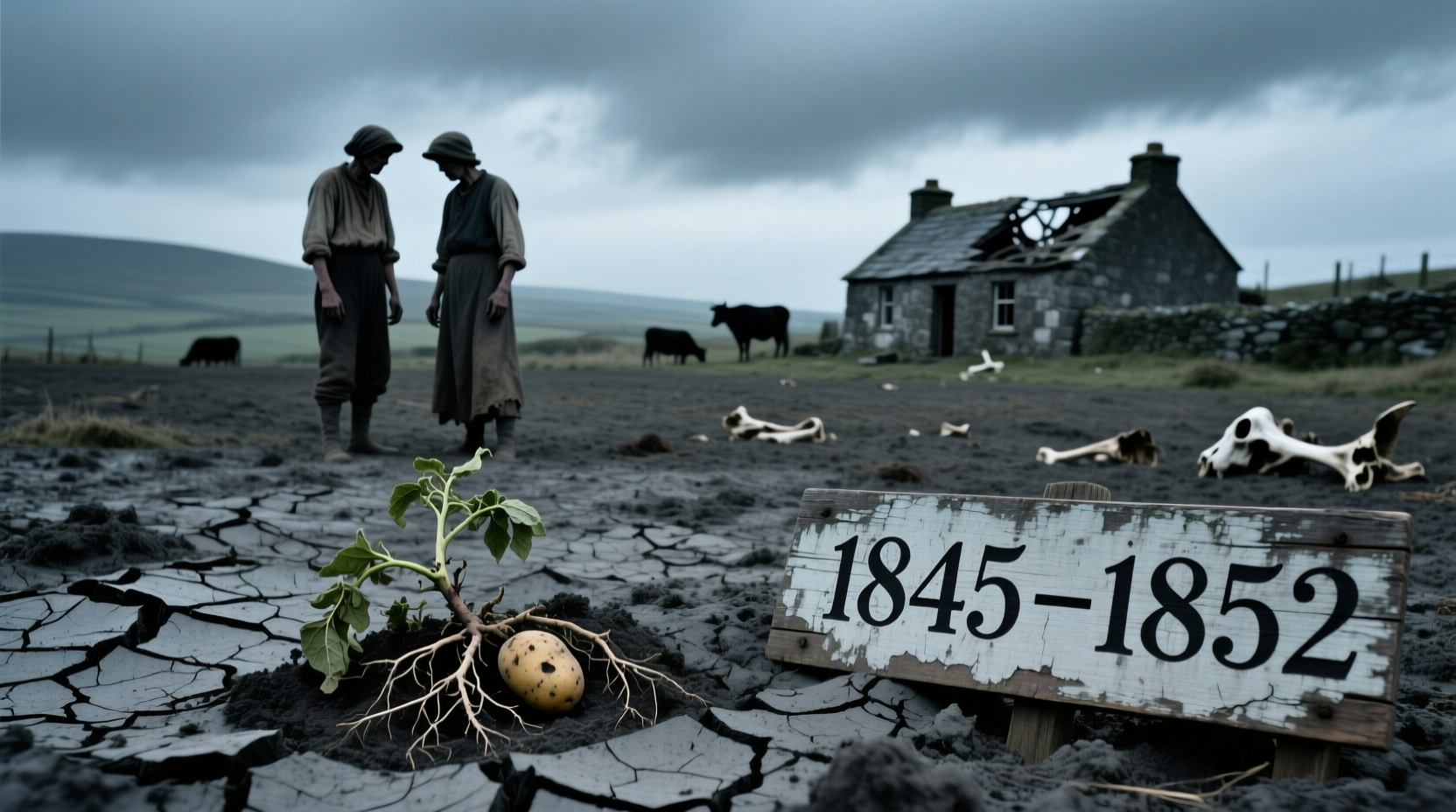When searching for the specific years of the potato famine, you're seeking precise historical context about one of the most catastrophic events in Irish history. Understanding the exact timeframe—1845 to 1852—provides crucial insight into how this agricultural disaster unfolded, why certain years were more devastating than others, and how the prolonged crisis transformed Irish society forever.
Why These Specific Years Matter in Irish History
The potato famine wasn't a single-year catastrophe but a multi-year disaster with distinct phases. Knowing the precise years (1845-1852) helps historians and students understand the progression of this tragedy. The famine began in 1845 when Phytophthora infestans, a destructive fungus-like organism, arrived in Ireland, destroying up to half the potato crop. By 1846, the blight returned with greater intensity, wiping out nearly the entire potato harvest. The year 1847, known as "Black '47," marked the famine's deadliest period, with approximately 400,000 deaths recorded. Though the worst years ended around 1849, the crisis officially continued until 1852 as Ireland struggled with recurring crop failures and their devastating consequences.
Timeline of the Great Famine: Key Years and Events
Understanding the potato famine requires examining how events unfolded year by year. This chronological approach reveals why certain periods were more catastrophic than others and how government responses (or lack thereof) affected the outcome.
| Year | Key Events | Impact |
|---|---|---|
| 1845 | First appearance of potato blight in Ireland; initial crop failure | Approximately 40% of potato crop destroyed; early relief efforts begin |
| 1846 | Complete crop failure; blight returns with greater intensity | Widespread starvation begins; workhouse populations surge; first major emigration waves |
| 1847 | "Black '47"—worst year of the famine; soup kitchens established | Approximately 400,000 deaths; peak of coffin ship emigration; fever epidemics |
| 1848-1849 | Recurring blight; political unrest; Young Irelander Rebellion | Continued high mortality; mass evictions; sustained emigration |
| 1850-1852 | Gradual recovery; final years of official famine period | Population decline stabilizes; long-term demographic effects become clear |
Why 1845-1852 Represents More Than Just Dates
The specific years of the potato famine (1845-1852) represent a complex interplay of biological disaster, political decisions, and social conditions. The blight first appeared in continental Europe in 1844 before reaching Ireland in 1845. Unlike other European countries that experienced crop failures, Ireland's dependence on the potato as a staple food for the rural poor created uniquely devastating consequences. Historical records from Trinity College Dublin show that while the blight affected crops across Europe, Ireland's social structure—where approximately 3 million people relied almost exclusively on potatoes—made the crisis particularly severe.
During "Black '47" (1847), the worst year of the famine, Ireland experienced not just crop failure but a perfect storm of factors: fever epidemics spread through malnourished populations, mass evictions increased homelessness, and inadequate government relief efforts failed to address the scale of the crisis. According to the National Famine Museum in Strokestown, Ireland, approximately 100,000 people died during the winter of 1846-1847 alone, with mortality rates peaking in 1847.

Understanding the Extended Impact Beyond 1852
While the official famine period ended in 1852, its effects continued for decades. The years 1845-1852 represent the acute crisis phase, but Ireland's population continued declining until the early 20th century. Census data from the Central Statistics Office Ireland shows that Ireland's population dropped from approximately 8.2 million in 1841 to 6.6 million in 1851, and continued falling to 4.5 million by 1901. This demographic collapse fundamentally altered Irish society, creating patterns of emigration that persist to this day.
The famine's legacy extends beyond mere statistics. The years of the potato famine created what historians call the "famine generation"—those who experienced the trauma directly and passed down cultural memories that shaped Irish identity. Understanding these specific years helps explain modern Irish diaspora communities, from Boston to Sydney, and the enduring cultural references in Irish literature and music.
Common Misconceptions About the Famine Years
Many people mistakenly believe the potato famine lasted only one or two years. In reality, the multi-year nature (1845-1852) was crucial to its devastating impact. Each successive year of crop failure depleted resources further, making recovery increasingly difficult. Another misconception is that the famine ended when the blight disappeared; in fact, the blight continued to affect crops intermittently until 1852, and food shortages persisted even after.
Some historical accounts oversimplify the famine as merely a natural disaster, but understanding the specific years reveals how political decisions during this period exacerbated the crisis. The British government's adherence to laissez-faire economic policies during these critical years limited effective intervention, while the continuation of food exports from Ireland during the famine years remains a contentious historical issue.
Frequently Asked Questions About the Potato Famine Years
These questions address common queries about the specific timeframe of the Irish Potato Famine and provide factual answers based on historical records.
What were the exact years of the Irish Potato Famine?
The Great Irish Potato Famine officially lasted from 1845 to 1852. The crisis began in 1845 when potato blight first appeared in Ireland, reached its deadliest point in 1847 ("Black '47"), and continued with varying severity until 1852 when crop failures became less widespread.
Why is 1847 considered the worst year of the potato famine?
1847, known as "Black '47," was the deadliest year of the famine because it marked the peak of mortality from starvation and disease. Approximately 400,000 people died that year due to complete crop failure, fever epidemics spreading through malnourished populations, and inadequate government relief efforts. Mass evictions also reached their highest levels during this period.
Did the potato famine really last seven years from 1845 to 1852?
Yes, historical records confirm the Great Famine lasted approximately seven years from 1845 to 1852. While the most severe period was 1846-1849, crop failures and their consequences continued through 1852. The National Famine Museum in Strokestown and Irish census records document this extended period of crisis and recovery.
How did the famine years affect Irish emigration patterns?
During the famine years (1845-1852), approximately 1 million Irish people emigrated, primarily to North America. The peak emigration year was 1851, with over 250,000 recorded departures. This mass exodus created the foundation for the modern Irish diaspora, with profound demographic consequences that continued long after 1852 as emigration remained high for decades.











 浙公网安备
33010002000092号
浙公网安备
33010002000092号 浙B2-20120091-4
浙B2-20120091-4